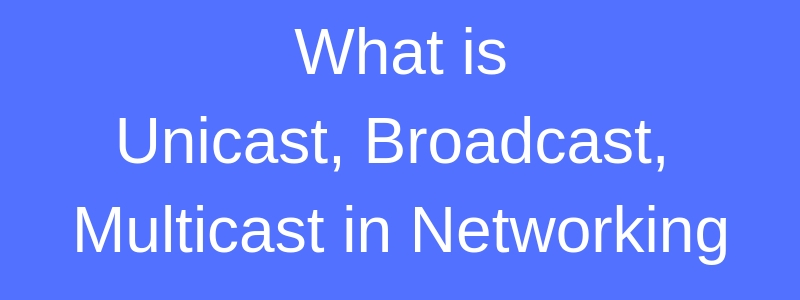For a CCNA certification exam you must be prepared to answer questions about three important networking concepts, Unicast, Broadcast and Multicast.

Even if these terms can be pretty confusing at the beginning, they are actually not that complicated. Learn how to keep them straight, along with other vital CCNA exam information.
At the beginning of your CCNA preparation studies, you will encounter some networking terminology that sounds alike between them. You will hear all the time the terms unicast, broadcast and multicast so we will try to explain their differences here in both Layer 2 and Layer3 levels.
What is Unicast:
Unicast is a packet/frame (or flow of packets/frames) that has a single destination. This is the most common kind of traffic that we see in TCP/IP networks. When for example you access a web server, this is a unicast traffic.
What is Broadcast:
A broadcast is a packet/frame (or flows of packets/frames) that are destined for ALL devices on the network/segment.
Every bit of the destination address in the packet will be binary “1”. A broadcast IP address (in Layer 3) is 255.255.255.255.
A broadcast Layer2 address is ff-ff-ff-ff-ff-ff. Every host on a segment will receive such a broadcast. (Keep in mind that switches will forward a broadcast, but routers do not).
Broadcast traffic is used to announce something to all hosts. For example, ARP (address resolution protocol) uses a broadcast address to propagate.
Multicast:
Multicast is the middle ground between unicast and broadcast. Multicast traffic is destined to a “group” of hosts, called “multicast group”.
Hosts register into a multicast group in order to receive the traffic which is destined to that group.
Multicast is used in Video over IP communication for example. For your CCNA studies you need only keep certain multicast groups in mind.
Class D addresses are reserved for multicasting and this range is 224.0.0.0 – 239.255.255.255.
The addresses 224.0.0.0 – 224.255.255.255 are reserved for use by network protocols on a local network segment, and like broadcasts, routers will not forward these multicast packets.
Some other examples of multicast traffic include OSPF hello packets (which are sent to multicast address 224.0.0.5), EIGRP updates sent to 224.0.0.10, and RIP version 2 uses 224.0.0.9 to send routing updates.